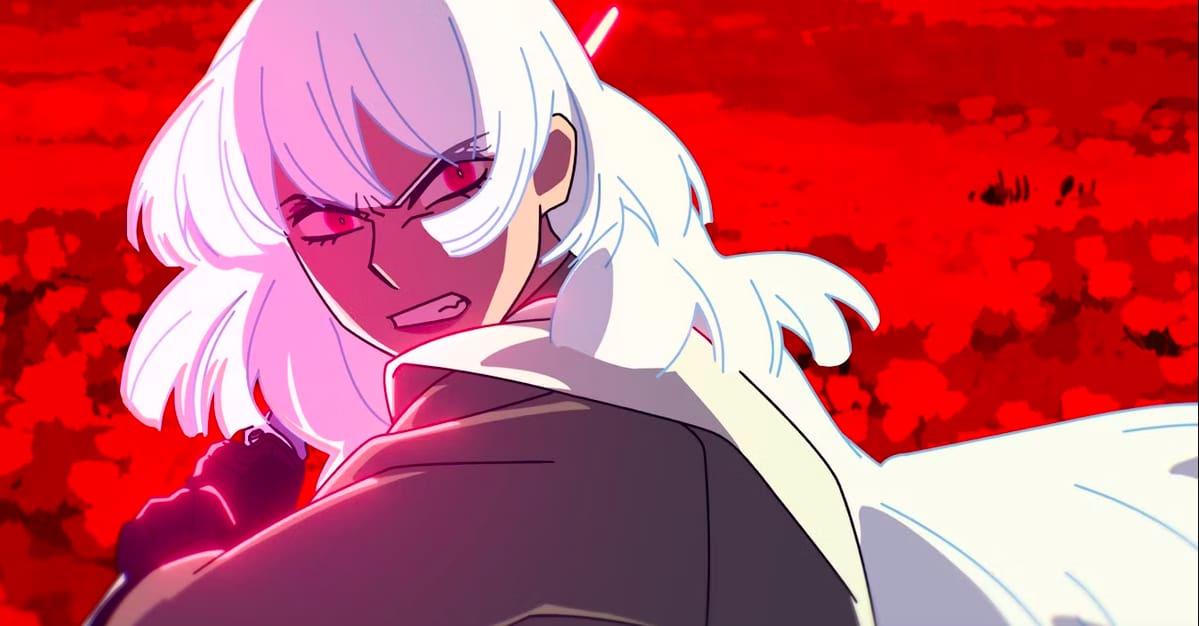
Written by Olivia Aiere
In a galaxy far, far away there are countless stories to be told.
Star Wars: Visions explores possibilities that are not usually shown in the movies and shows. As an anthology series, Visions jumps around and follows different characters in different time periods of the galaxy every episode. It is by no means a necessary watch to understand Star Wars, but to those interested in lesser told stories of the galaxy in bite-sized format, it might scratch that itch. For those who desire longer stories featuring new characters, diving into the books would be the path to go down instead.
Star Wars: Visions Season 3, which just premiered last week on Disney Plus, includes two continuation episodes from the first season, with “The Duel: Payback” and “The Ninth Jedi: Child of Hope.” Both episodes can be viewed without seeing the original episodes first, although since “The Ninth Jedi: Child of Hope” seems to set up another follow-up, it might be helpful to watch the original first. “The Duel: Payback” follows a mysterious Ronin, an obvious homage to the chambara films that inspired George Lucas.
Similar to how “The Duel” in Season 1 had callbacks to Revenge of the Sith, “The Duel: Payback” heavily references Return of the Jedi, even bringing back the Ewoks. This Ronin is haunted by a Jedi he wounded and must face his past in classic samurai fashion. One of the most visually interesting episodes of the season, this first episode of Season 3 is a great take on the samurai influences that made Star Wars.
The next episode, “The Song of Four Wings,” boasts a great art style. The main character’s hair is reminiscent of a Pokémon character, and her uniqueness doesn’t stop there. She’s sent to check out the Empire’s presence on the planet housing a Rebel cell, and finds a child still in the village that the Empire cleared. With her savvy droid and her new companion, she discovers the Empire’s true purpose on the planet. It’s a very cute story overall that sneaks in some flashbacks to our main characters’ past and provides a cute new alien creature like this franchise is wont to do.
“The Ninth Jedi: Child of Hope” follows Kara still looking for her father after he was taken by Jedi hunters. She gets stranded away from her crew and encounters Teto, a droid looking for his Jedi owner. She helps Teto find his master while evading the same Jedi hunters that took her father. It will be interesting to see them follow this story in future seasons, and the continuous storyline manages to fit in nicely among the other individual stories. With the bittersweetness within this one episode, the pay off for the end of this story will surely be an emotional one.
“The Bounty Hunters” introduces Sevn and her droid, IV-A4, running from a gang they’ve upset. They take a new job from Jin-Sim, who employs orphans in his factory. Sevn’s perception of these workers gets in the way of the capture of her targets, who claim that Jin-Sim is kidnapping the children for labor. Sevn is a great anti-hero type, perfect for those who love characters with questionable morals that ultimately save the day.
Yuko and his caretaker droid encounter a band of thieves looking for treasure in “Yuko’s Treasure.” This was the least captivating of the season, simply because the art style didn’t leave a big impression and the characters weren’t as magnetic as in the other episodes. It is an enjoyable feel-good story, but the advantage of Visions being an anthology is that viewers can pick and choose to watch the episodes that interest them the most.
The sixth episode “The Lost Ones” starts a little slow. The art style is not too captivating here, but there are some references to Jedi and a dramatic lightsaber battle that some fans might find worth the watch. This isn’t a weak episode by any means, but compared to the other episodes of the season this one doesn’t stand out.
I find myself more drawn to stories that don’t center around the Jedi, treating them like myth or not being familiar with the order of Force-users. “The Smuggler” acknowledges the Jedi a bit, but touches on this legendary status they hold with many people in the galaxy. The smuggler’s cargo consists of two people, one of which is a former public figure, trying to flee a planet overtaken by the Empire. There’s some explosive dogfighting action in this episode that also happens to feature an anti-hero type.
“The Bird of Paradise” follows a Padawan after her hubris in battle leaves her blind and alone. She sees visions during her journey to learning a lesson of the force. This episode features some 3D-like animation reminiscent of a video game, with beautiful scenery and an imaginative depiction of the Padawan’s inner battle.
The season finale “Black” is a particularly flashy end to the season. It boasts a sketchy design and is scored with upbeat jazz. It’s violent, but not gory, and follows a tussle between stormtroopers. This episode is probably the most experimental of the bunch, but packs a lot of flavor. The soundtrack compliments the animation perfectly for a great viewing experience.
Star Wars: Visions Season 3 has something for everyone. I personally enjoy stories that treat Jedi like fairytales or don’t mention them at all, as Star Wars has so much more to tell of the unsung heroes of the galaxy. Fans of the Jedi and Sith could still be happy with the bite-sized tales found in Season 3, although these particular depictions don’t fit the status quo you might be used to. A completionist might find watching the whole of Season 3 in one sitting to be a bit of a slog, since the individuality of the episodes makes the pacing of the season a bit wild. But any average fan could surely find enjoyment in whatever story piques their curiosity the most.

